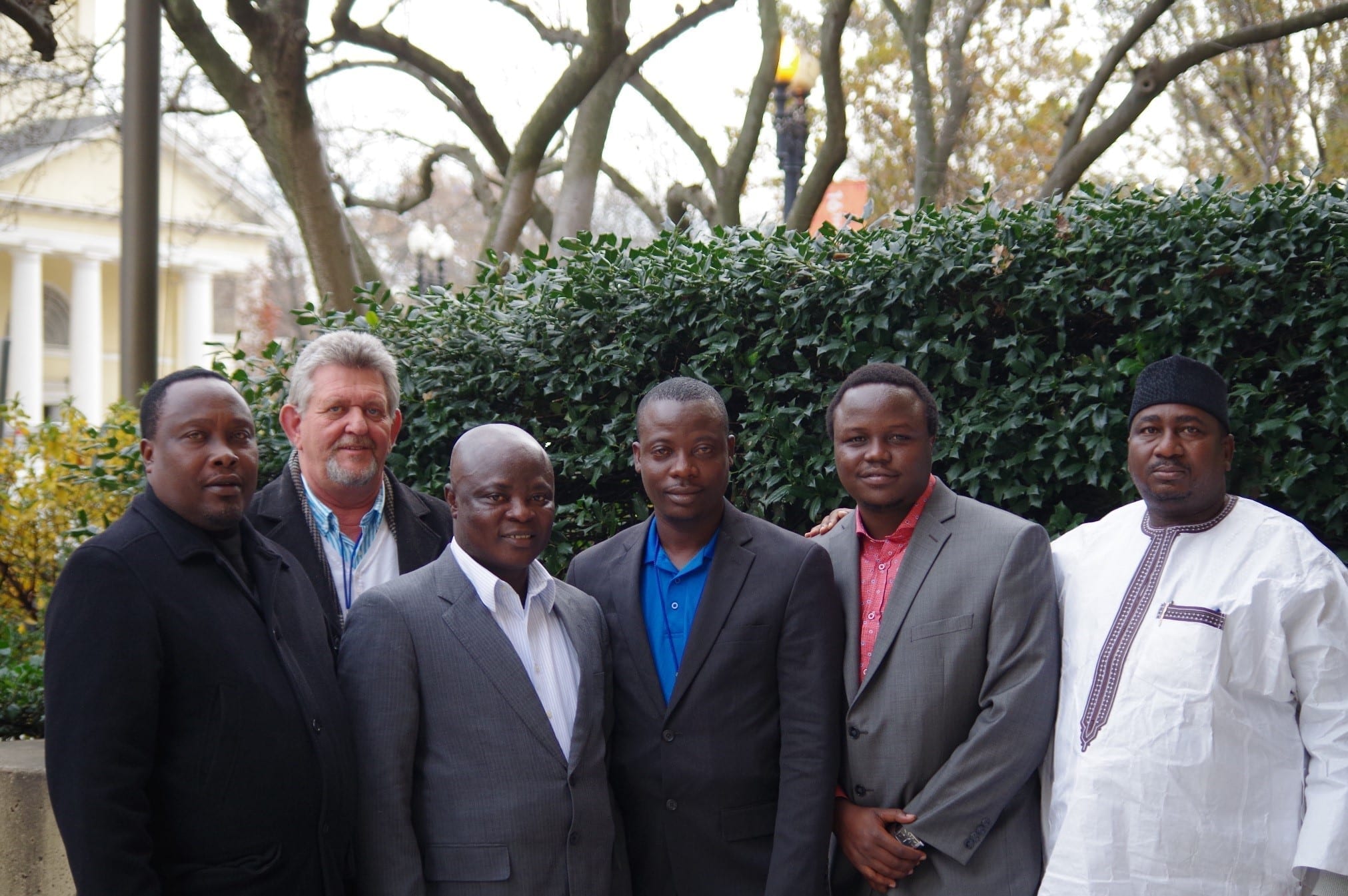
Dec 10, 2015
Addressing unemployment and underemployment, especially for young workers, is the most pressing issue for trade unions across Africa, according to participants in an African Labor Leaders Exchange Program sponsored by the Solidarity Center.
Speaking at a December 9 panel discussion at the AFL-CIO in Washington, D.C., six union leaders from Kenya, Liberia, Nigeria and South Africa discussed the challenges in securing economic prosperity for working people—and their strategies for empowering workers in the formal and informal economies.
“What faces us is high levels of unemployment, poverty,” said Edward de Klerk, deputy general secretary of South Africa’s United National Transport Union (UNTU).
“Unemployment is an African issue,” said Philip Kwoba, director of Youth Organizing with the Central Organization of Trade Unions (COTU) in Kenya. Unions in Kenya are reaching out to informal economy workers, which include many young workers, helping them form worker savings associations as a step toward unionization and gaining bargaining rights. “We are allocating resources to help,” said Kwoba.
Members of the panel, moderated by Solidarity Center Regional Program Director for Africa Imani Countess, said poverty also is fueled by low wages. “Wage inequality is this battle still we have got,” said de Klerk. In Nigeria, unions are tackling wage issues by addressing government policies that reduce the pay of public-employees, including teachers, said Muhammed Nasir Idris, National Treasurer Nigeria Union of Teachers (NUT).
Lack of employment opportunity and poverty in Liberia puts youth at risk of labor trafficking within the country’s borders, said Liberia Labor Congress (LLC) General Secretary David Sackoh.
Sackoh said labor recruiters take children from parents in their villages, promising the children will go to school in the city. Instead, the children are used in forced labor. “Even though our research shows (the children) want to return,” they are unable to do so for seven to 10 years,” he said.
Sackoh pointed to the Liberian trade union movement’s tremendous victory in eradicating child labor at the Firestone Natural Rubber Liberia plantation, and said the union movement now is working to address the issue at the seven other plantations across the country.
During questions with the audience, which included a packed crowd of union activists, policy experts and international experts, union leaders also discussed drawing more women into trade union leadership.
“Getting women elected to high offices is now on the union agenda,” said Boniface Kavuvi, general secretary of the Kenya Union of Commercial, Food and Allied Workers (KUCFAW). Kavuvi pointed to domestic workers in Kenya, represented by KUDHEIHA, as an example of dynamic organizing and strong leadership by women in Kenya. “They have done a tremendous job,” he said.
In Liberia, unions are pushing for 30 percent representation by women in union leadership, mirroring the country’s effort to increase women’s representation in the national legislature, said Isaac Grant, LLC organizing coordinator.
The six union leaders traveled to the United States for a South–South labor leaders’ exchange in which African labor leaders met with community and trade union organizers across the southern United States. The Solidarity Center worked with the U.S.-based labor education program, the National Labor Leadership Initiative (NLLI), to facilitate the exchange, sponsored by the U.S. Department of State’s Bureau of Educational and Cultural Affairs.
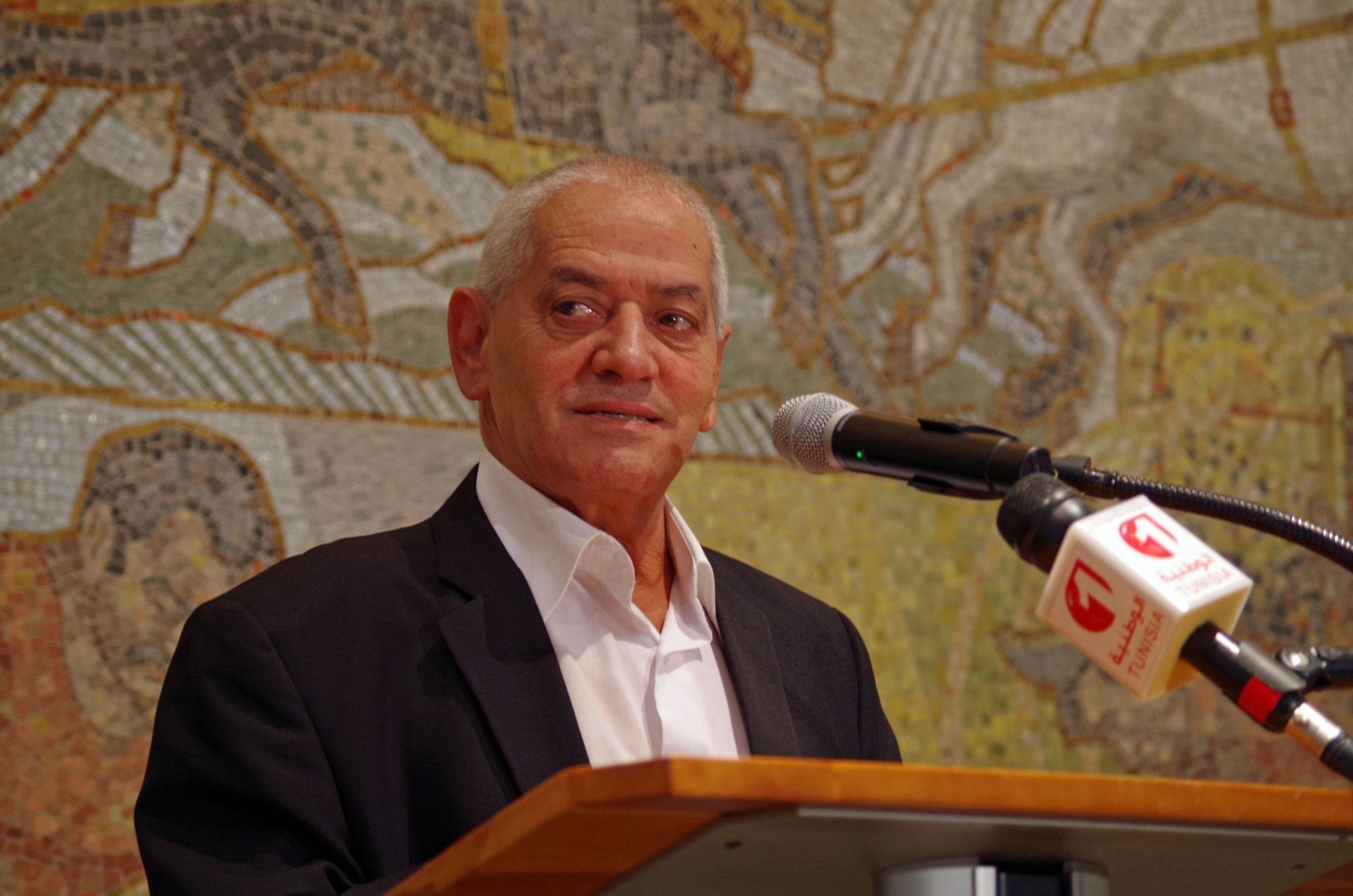
Dec 10, 2015
Marking International Human Rights Day, the Nobel Peace Prize was formally awarded today to the Tunisian “Quartet,” which includes the country’s labor movement for its role in brokering a peaceful path to democracy.
At a ceremony in Oslo, Norway, Houcine Abassi, general secretary of the Tunisian General Labor Union (Union Générale Tunisienne du Travail, UGTT) said, “Tunisia is an exception so far in the Arab Spring countries, but this doesn’t mean that it may not be replicated in other countries.”
Speaking last month at a ceremony in Washington, D.C., Abassi said “the Nobel Prize is not given just to us, but to all the labor movements in the world.” The award “sends a message that unions can play an equal role in government, in social dialogue … and many times can provide critical leadership.”
While in Washington, Abassi received the Global Fairness Initiative’s Fairness Award on behalf of UGTT, a long-time Solidarity Center ally.
The Nobel Committee recognized the Tunisian National Dialogue Quartet—comprised of the (UGTT); the Tunisian Confederation of Industry, Trade and Handicrafts; the Tunisian Human Rights League; and the Tunisian Order of Lawyers—for establishing “an alternative, peaceful political process at a time when the country was on the brink of civil war.”
Their efforts led the country to democracy and the adoption of a Constitution based on fundamental human rights.
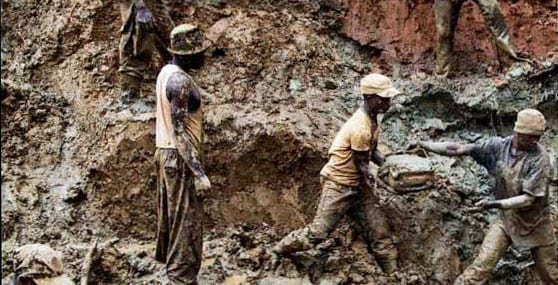
Dec 2, 2015
The following is crossposted from Equal Times.
On November 18, 2015, Norway ratified the International Labor Organization’s (ILO) Forced Labor Protocol, which strengthens and updates the 1930 Forced Labor Convention (Convention 29) by adding new measures to prevent, protect and compensate those affected.
According to ILO data, some 21 million people globally are victims of forced labor, generating approximately $150 billion each year. However, the hidden nature of this and other forms of extreme labor exploitation mean the true figures could be much higher.
By becoming the second country in the world after Niger to sign the UN treaty, Norway has ensured that the Protocol will be brought into force next November.
“Norway’s ratification will help millions of children, women and men reclaim their freedom and dignity,” said ILO Director-General Guy Ryder in a statement. “It represents a strong call to other member states to renew their commitment to protect forced laborers, where ever they may be.”
Renée Rasmussen, Confederal Secretary of the Norwegian Confederation of Trade Unions, said: “The world has changed dramatically since 1930, but in many societies the issues that Convention 29 was created to deal with are still unpleasantly current.”
Although 56 per cent (11.7 million), 18 per cent (3.7 million) and 9 per cent (1.8 million) of all forced labourers are found in Asia, Africa and Latin America respectively, the reach of modern-day slavery crosses countries, continents and sectors.
Workers in agriculture, fishing, manufacturing, domestic work and mining in the Global South are particularly vulnerable, while in advanced economies huge profits are generated from forced labor in supply chains.
“Our experience [in Norway] is that forced labor seems to appear together with social dumping and violations of the Working Environment Act (labor laws) and criminal activities,” Rasmussen explained.
Further ratifications
The ILO recently joined forces with the International Trade Union Confederation and the International Organization of Employers to the promote the ratification of the Protocol, primarily through the 50 for Freedom campaign.
By mobilizing public support, it is hoped that 50 countries will ratify the Forced Labor Protocol by 2018. It the ultimate aim is universal ratification of Convention 29—as eight countries, including the United States and China are yet to do so—and the Protocol by 2030.
While various countries have expressed support for the campaign, a number of African countries appear to be taking the lead. Mauritania has started the legislative process to ratify the Protocol and last month the Zambian president Edgar Lungu signalled his country’s commitment to eliminate modern slavery.
“My country will lead by example in taking the necessary steps required towards ratification of the Protocol,” he told delegates at a regional ILO conference on trafficking and forced labour in the Zambian capital of Lusaka.
Speaking at the same conference, Cosmas Mukuka, Secretary General of the Zambian Confederation of Trade Unions explain why the ratification is so important.
“Zambia continues to be the transit point for human trafficking in Africa meaning that enforcement of Convention 29 on forced labour remains a challenge and therefore calls for a regional strategy to effectively combat forced labour and human trafficking.”
Ahead of the International Day for the Abolition of Slavery, Urmila Bhoola, the United Nations Special Rapporteur on contemporary forms of slavery, called on states, business and civil society to intensify the fight against modern slavery in supply chains.
“Modern slavery is particularly difficult to detect beyond the first tier of complicated supply chains of transnational businesses,” she said.
“However, these forms of slavery can be rooted out through a multi-stakeholder and multi-faceted approach ensuring that all business operations and relationships are based on human rights, that those responsible for supply chain-related human rights violations are held accountable and that the victims are guaranteed the right to effective judicial and non-judicial remedy and appropriate and timely assistance aimed at empowering them.”
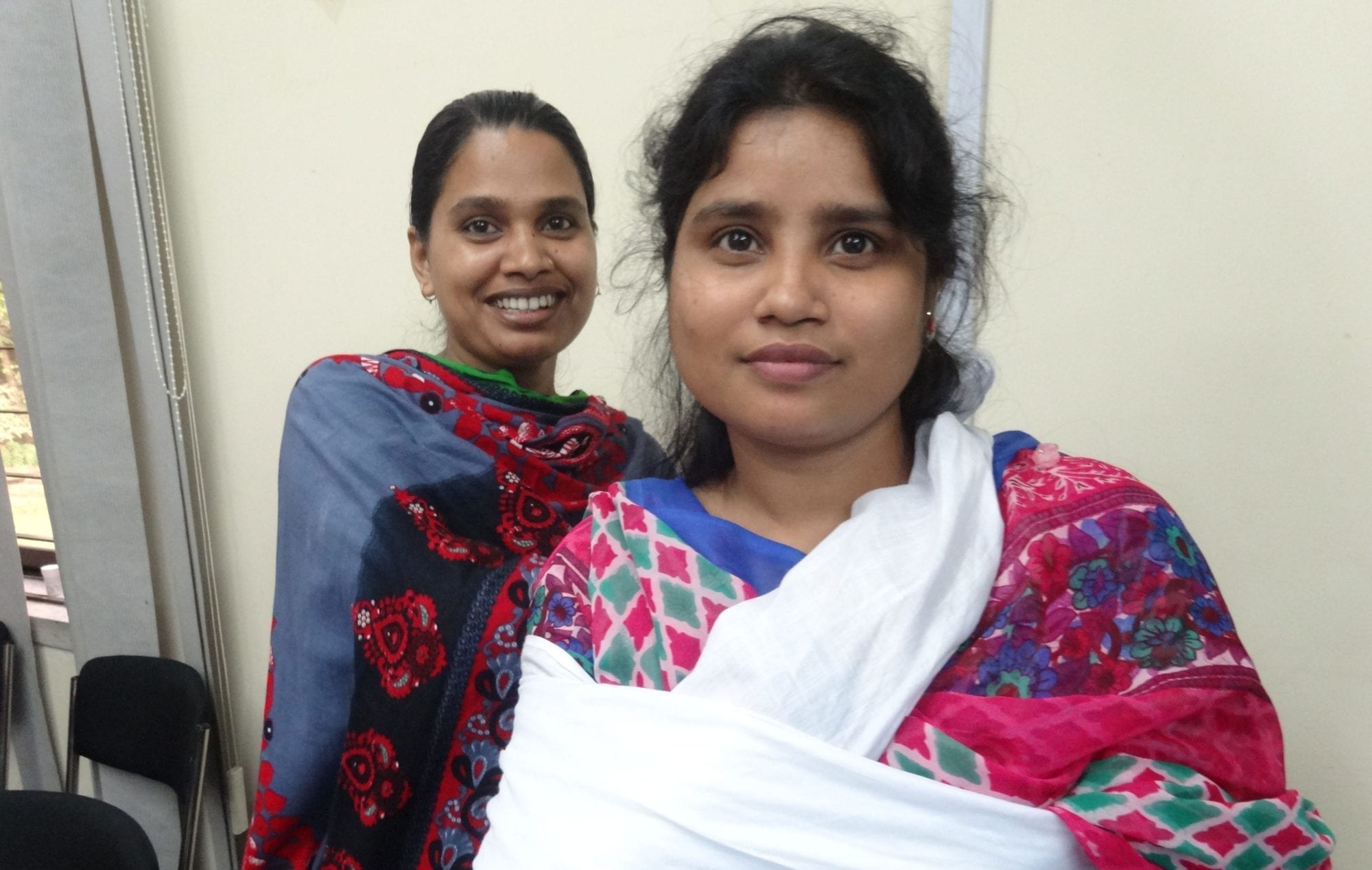
Nov 19, 2015
Bilkish Begum says she and other workers at a garment factory in Bangladesh could not discuss implementing fire safety measures with their employer—even after the deadly blaze at Tazreen Fashions factory killed 112 workers three years ago next week. Only when they formed a union, which provides workers with protection against retaliation for seeking to improve their workplace conditions, could they take steps to help ensure their safety.
“Things have improved a lot regarding fire safety once we formed union as now we have the power to raise our voice,” she says.
Bilkish, 30, now a leader of a factory union affiliated with the Sommilito Garments Sramik Federation (SGSF), is among hundreds of garment workers who have taken part in Solidarity Center fire safety trainings this year. The Solidarity Center works with garment workers, union leaders and factory management to improve fire safety conditions in Bangladesh’s ready-made garment industry through such hands-on courses as the 10-week Fire and Building Safety Resource Person Certification Training.
“I used to be afraid about fire eruption in my factory,” Bilkish says. “But after attending trainings, I feel that if we work together, we can reduce risk of fire in our factory.”
Fire remains a significant hazard in Bangladesh factories. Since the Tazreen fire, some 34 workers have died and at least 985 workers have been injured in 91 fire incidents, according to data collected by Solidarity Center staff in Dhaka, the capital. Incidents resulting in injuries include at least eight false alarms.
In January, after a short-circuit caused a generator to explode at one garment factory, Osman, president of the factory union and Popi Akter, another union leader, quickly addressed the fire and calmed panicked workers using the skills they learned through the Solidarity Center fire training. They also worked with factory management to correct other safety issues, like blocked aisles and stairwells cramped with flammable material.
Many workers who have taken part in the trainings say they are equipped to handle fire accidents.
“We are now confident after the training that we can help factory management and other workers if there is any incident of fire in our factory,” says Mosammat Doli, 35, a leader of a union affiliated with the Bangladesh Garment and Industrial Workers’ Federation (BGIWF).
“From my experience at my factory, I have seen that an effective trade union can ensure fire safety in the factory as it can raise safety concerns,” he said.
Fewer than 3 percent of the 5,000 garment factories in Bangladesh have a union. And according to the International Labor Organization, 80 percent of Bangladeshi garment factories need to address fire and electrical safety standards. Yet, despite workers’ efforts to form organizations to represent them this year, the Bangladeshi government rejected more than 50 registration applications—many for unfair or arbitrary reasons—while only 61 were successful. This is in stark contrast to only two years ago, when 135 unions applied for registration and the government rejected 25 applications, and to 2014, when 273 unions applied and 66 were rejected.
Without a union, workers often are harassed or fired when they ask their employer to fix workplace safety and health conditions.
Because his workplace has a union, which enabled Doli to participate in fire safety training, he—like Osman and Popi Aktee—already has potentially saved lives. Together with other union leaders, he helped evacuate workers and extinguish a fire in their garment factory.
Shahabuddin, 25, an executive member of his factory union, which is affiliated with SGSF, is among Bangladesh garment workers who see firsthand how unions help ensure safe and healthy working conditions. He says his workplace had no fire safety equipment—until workers formed a union and collectively raised the issue of job safety.
“Now management conducts fire evacuation drills almost regularly. We did not imagine it just a few years back. As we formed union, many things started changing,” he says.
Mushfique Wadud is Solidarity Center communications officer in Bangladesh.
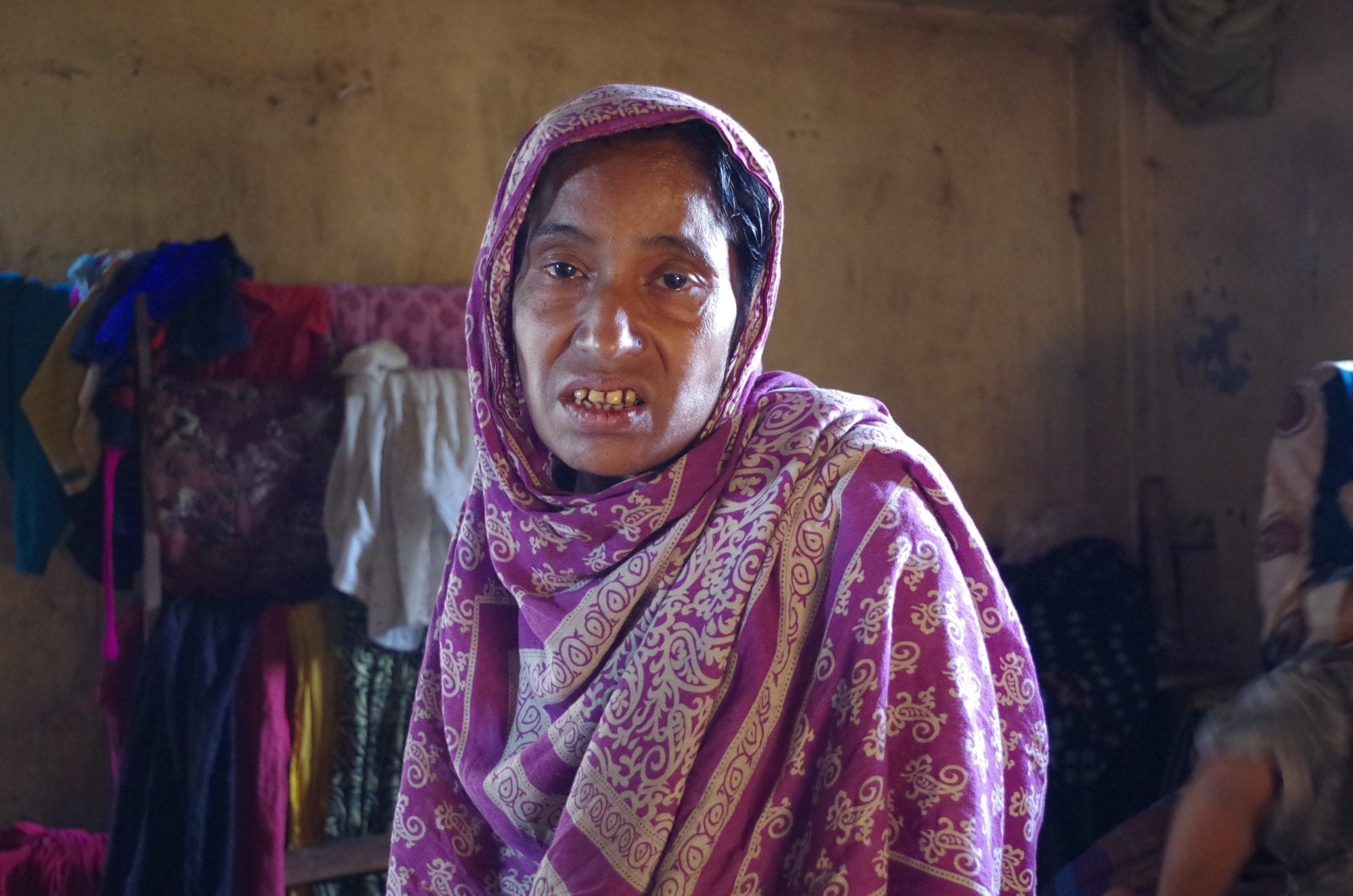
Nov 19, 2015
“You have forgotten the Tazreen fire incident but our actual suffering has just started,” says Anju, who experienced severe head, eye and other bodily injuries during the fatal Tazreen Fashions Ltd. fire in Bangladesh that killed 112 garment workers.
Survivors of the November 24, 2012, Tazreen fire who recently talked with Solidarity Center staff in Bangladesh say they endure daily physical and emotional pain and in many cases, have little or no means of financial support because they cannot work. Some, like Anju, who is unable to work, have never received compensation for their injuries.
Bangladesh’s $25 billion garment industry fuels the country’s economy, with ready-made garments accounting for nearly four-fifths of exports. Yet many of the country’s 4 million garment workers, most of whom are women, still work in dangerous, often deadly conditions. Since the Tazreen fire, some 34 garment workers have died and 985 have been injured in 91 fire incidents, according to data collected by Solidarity Center staff in Dhaka, the capital.
Some 80 percent of export-oriented ready made garment (RMG) factories in Bangladesh need improvement in fire and electrical safety standards, despite a government finding most were safe, according to a recent International Labor Organization (ILO) report.
The Solidarity Center has had an on-the-ground presence in Bangladesh for more than a decade. Through Solidarity Center fire safety trainings for union leaders and workers, garment workers learn to identify and correct problems at their worksites. But fewer than 3 percent of the 5,000 garment factories in Bangladesh have a union. ” Despite workers’ efforts to form unions, in 2015 alone the Bangladeshi government has rejected more than 50 registration applications—many for unfair or arbitrary reasons—while only 61 have been successful. The rejections have jumped significantly from 2014, when 273 unions applied and 66 were rejected.
So that the world does not forget, here is the story of Anju and others who survived the Tazreen fire.
Photos: Solidarity Center/Mushfique Wadud
[portfolio_slideshow id=6745]





